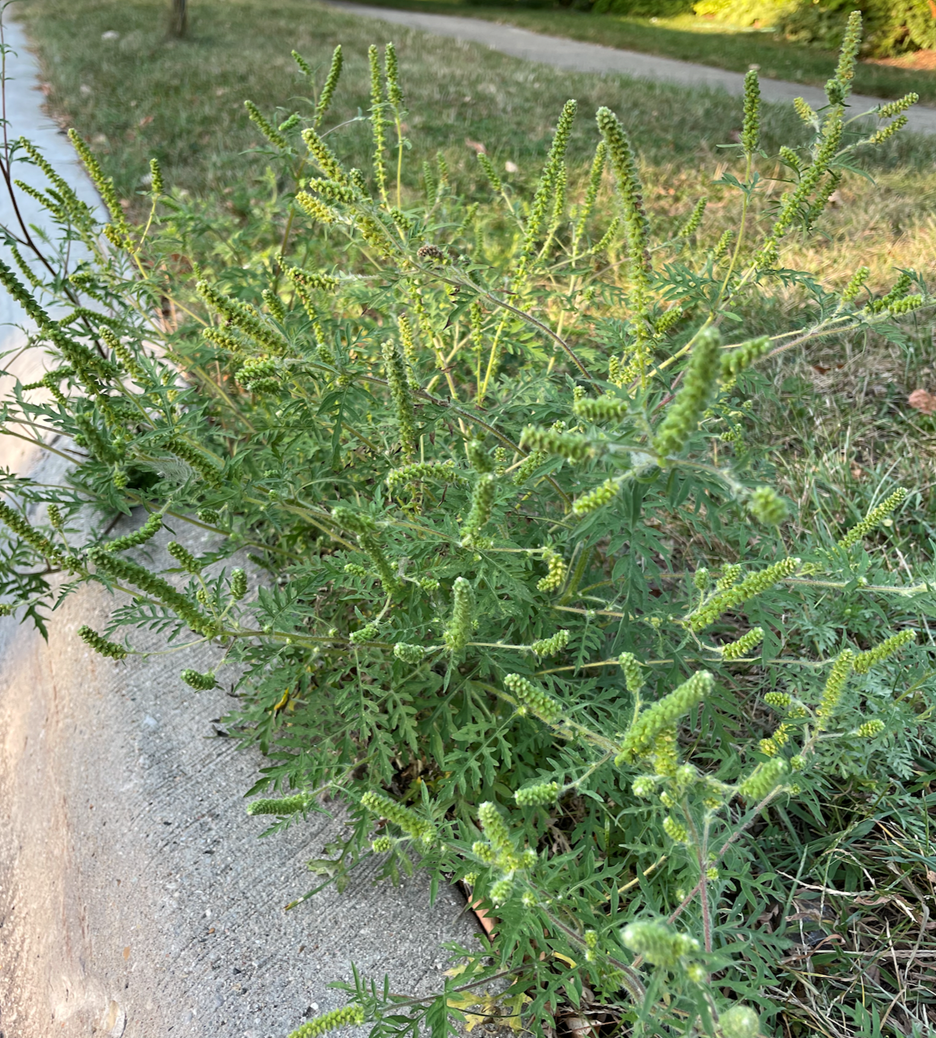
In the late summer, some of us are facing a familiar and unwelcome visitor: seasonal allergies, also known as hayfever. Many people associate their suffering with the many species of Goldenrod flowers that bloom in August and September, and understandably assume that they are allergic to these plants.
However, while a small percentage of people have an allergy to Goldenrod pollen, it is much more common for the culprit to be another common, but much more inconspicuous, plant—Ragweed.
Goldenrods are insect-pollinated (Entomophilous), and they have developed eye-catching golden flowers to attract those pollinators. The pollen of Goldenrods is relatively heavy, and sticks to its insect visitors. People who have trouble with Goldenrod pollen allergies usually discover the problem while working closely with flowers on a regular basis, as florists or horticulturists. Keeping hands and faces out of the blooms is the best way to avoid this pollen exposure.
At Red Stem Native Landscapes we almost always include one or more of the 22 species of Goldenrod native to the Chicago area in our designs. It is one of the highlights of the late summer/fall bloom season, and there are species for just about every type of cultural condition—sun to shade, dry to wet. It is also a keystone plant in our local ecosystem, supporting a large diversity of insects and birds.

A bee and a beetle, among other pollinators, gather nectar and protein-rich pollen from Stiff Goldenrod (Oligoneuron rigidum)
Ragweed, on the other hand, is wind-pollinated (Anemophilous). Almost 50 million people in the U.S. suffer from a Ragweed pollen allergy. Its male flowers can produce up to 1 million pollen grains per plant, and the wind can carry this pollen for miles. It does not depend on insect pollinators, so its flowers are small and green and do not attract attention. It is easy to overlook, and is common in roadside verges, weedy lots and other unmanaged areas. Ragweed has a role to play in our local ecosystems, hosting specialist insects which in turn support birds, but it is not recommended for home landscapes or community gardens. The best way to reduce exposure to Ragweed pollen is to learn to identify the plant by its leaves and remove it before it blooms.

Common Ragweed (Ambrosia artemisiifolia) has fern-like leaves which are wider at the base and taper to a point at the tip

Common Ragweed grows in dry, sunny conditions, usually in areas with disturbed soil

Giant Ragweed (Ambrosia trifida) grows in moist conditions, is 3-12 feet tall, and its large leaves have 3 to 5 lobes, looking like an open hand
Written by Betsy Seff
https://aafa.org/allergies/types-of-allergies/pollen-allergy/ragweed-pollen/
https://blog.nwf.org/2014/09/the-goldenrod-allergy-myth/
https://extension.illinois.edu/blogs/good-growing/2022-10-21-autumn-allergies-dont-blame-goldenrod
https://www.illinoiswildflowers.info/weeds/plants/giant_ragweed.htm